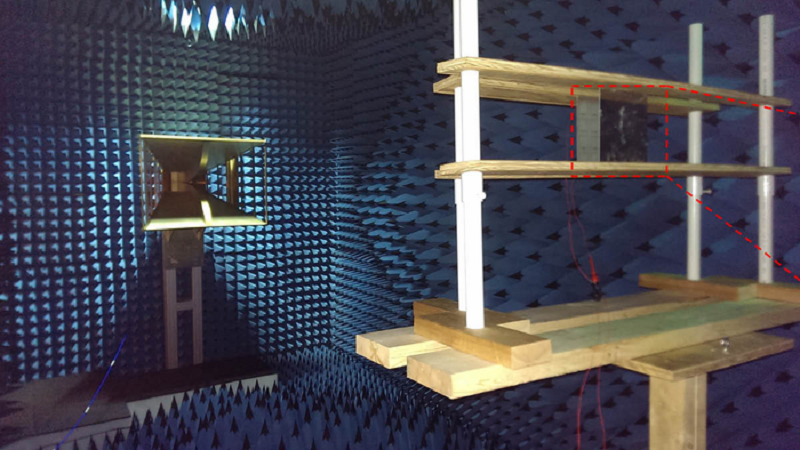
The researchers tested their metamaterial-based antenna in an anechoic chamber. The radio wave is sent out from the horn antenna on the left and received by the metasurface antenna mounted on the wood frame on the right. The anechoic chamber eliminates background signals from other sources and prevents stray signals from the radio wave source from bouncing around the room and perturbing measurements. The image of metamaterial-based antenna is enlarged on the right.